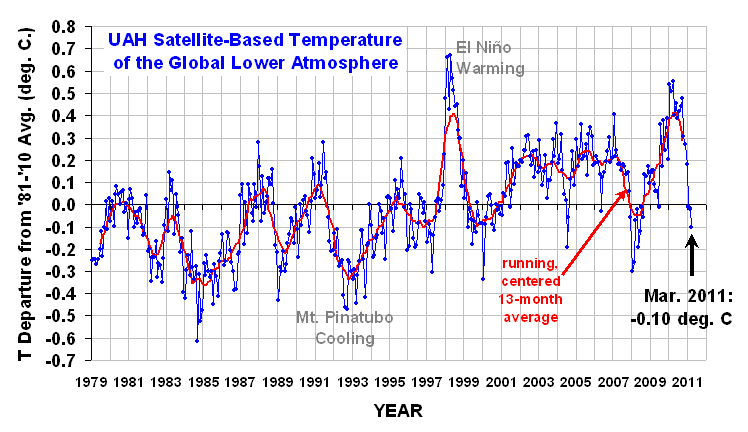YR MON GLOBAL NH SH TROPICS
2010 01 0.542 0.675 0.410 0.635
2010 02 0.510 0.553 0.466 0.759
2010 03 0.554 0.665 0.443 0.721
2010 04 0.400 0.606 0.193 0.633
2010 05 0.454 0.642 0.265 0.706
2010 06 0.385 0.482 0.287 0.485
2010 07 0.419 0.558 0.280 0.370
2010 08 0.441 0.579 0.304 0.321
2010 09 0.477 0.410 0.545 0.237
2010 10 0.306 0.257 0.356 0.106
2010 11 0.273 0.372 0.173 -0.117
2010 12 0.181 0.217 0.145 -0.222
2011 01 -0.010 -0.055 0.036 -0.372
2011 02 -0.020 -0.042 0.002 -0.348
2011 03 -0.099 -0.073 -0.126 -0.345
La Nina Coolness Persists
The global average lower tropospheric temperature anomaly for March 2011 fell to -0.10 deg. C, with cooling in both the Northern and Southern Hemispheric extratropics, while the tropics stayed about the same as last month. (I’m on the road in Virgina, so the temperature graph will not be updated until I return on Thursday.)
 |

 Home/Blog
Home/Blog




